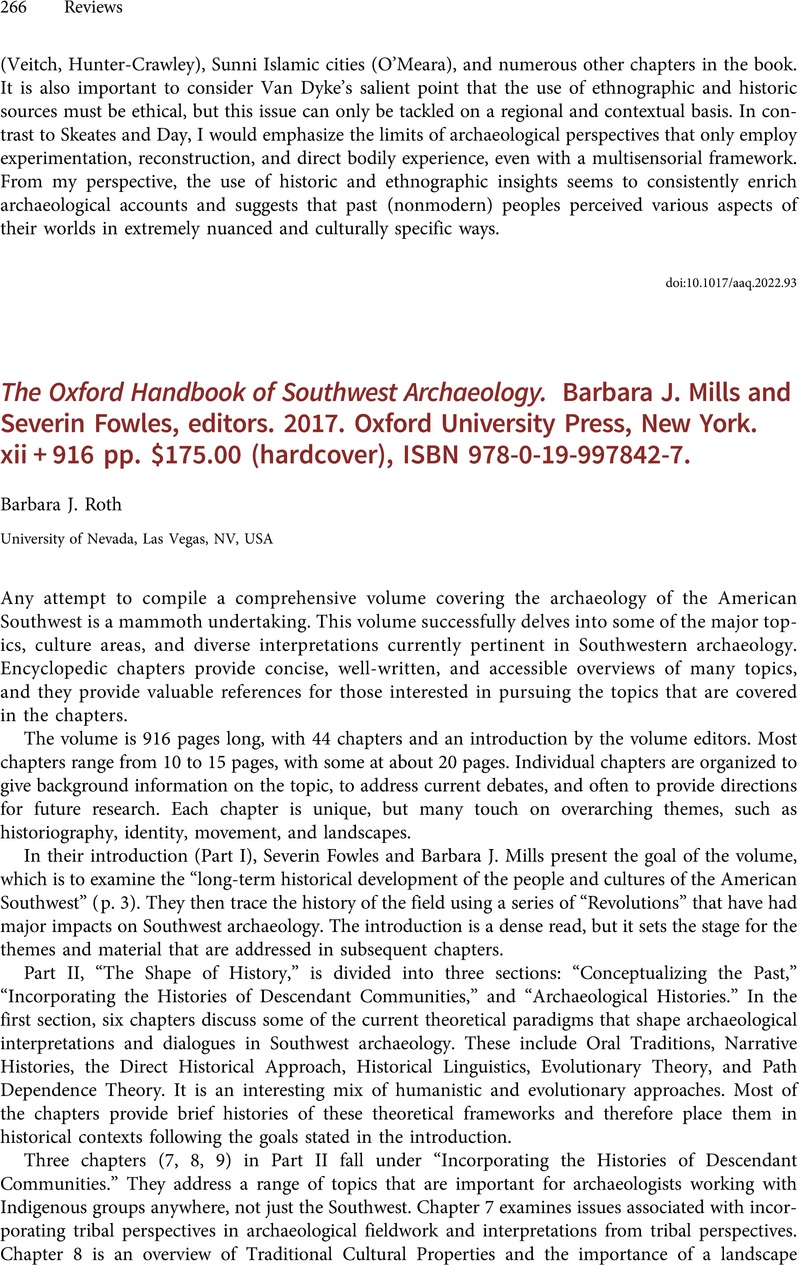No CrossRef data available.
Article contents
The Oxford Handbook of Southwest Archaeology. Barbara J. Mills and Severin Fowles, editors. 2017. Oxford University Press, New York. xii + 916 pp. $175.00 (hardcover), ISBN 978-0-19-997842-7.
Review products
The Oxford Handbook of Southwest Archaeology. Barbara J. Mills and Severin Fowles, editors. 2017. Oxford University Press, New York. xii + 916 pp. $175.00 (hardcover), ISBN 978-0-19-997842-7.
Published online by Cambridge University Press: 09 December 2022
Abstract
An abstract is not available for this content so a preview has been provided. Please use the Get access link above for information on how to access this content.

- Type
- Review
- Information
- Copyright
- Copyright © The Author(s), 2022. Published by Cambridge University Press on behalf of the Society for American Archaeology


